Search Results
Fine Jewelry University Articles matching: “emerald ring”
Showing only FJU Article results. Click here to show all results.
Fine Jewelry University (Show All FJU Articles)
-
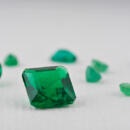
Gem in the Spotlight: Emerald
Springtime exudes life, full of bright colors and renewed energy. Emerald, May’s gemstone, captures this enthusiasm for life in rich elegance. This precious gemstone has been revered for … mineral family (along with morganite and aquamarine) and are valued for their rich green color. The intensity of an emerald‘s hue depends on the presence of chromium and vanadium in the crystal structure. Emerald’s Mohs hardness rating is 7… a moderately refractive gemstone. Its specific gravity ranges from 2.65 to 2.75. One of the distinctive features of emeralds is that they often contain inclusions. Sometimes these inclusions are referred to as jardin (the French word for …
-
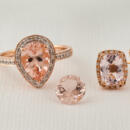
Gem in the Spotlight: Morganite
… popular gemstones. Morganite has an impressive family tree. It is a beryl gem which puts it in the same family as emerald and aquamarine. Because of its association with emerald it is sometimes called “Pink Emerald”. Other names for …. Its durability is rated as excellent. Its hardness is 7.5 – 8.0 on the Mohs hardness scale which is comparable to emerald, topaz, and spinel. Its refractive index is 1.560 – 1.600, and its specific gravity is 2.67 – 2.90. These …
-
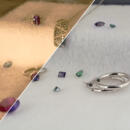
Gem in the Spotlight: Alexandrite
Emerald by day, ruby by night, more expensive than diamond and more illustrious than sapphire, emerald, or even ruby, …the Ural Mountains in Russia in the 1830s. When it was first discovered by a Finnish mineralogist, he mistook it for emerald because of how exceptional the green was in daylight. Named after the Russian prince Alexander II, the first stones … component, the stone will appear redder. Alexandrite has a refractive index of 1.746-1.755 with an average birefringence of .010. It has a specific gravity of 3.73 and a Mohs hardness of 8.5. Because of its high hardness, alexandrite is …
-
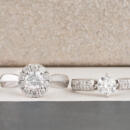
Anatomy of a Ring
Knowing the different parts of a ring can help you make a better decision when choosing a new ring and it can help you know when your ring may need … ring has a shank. This is the technical term for the band of metal that encircles the finger. There would be no ring without the shank. If the ring has a distinct design feature on the top part, the ring shank is generally said to start … point that the design stops. A jeweler will usually add or remove metal from the bottom of the shank when sizing a ring. This can sometimes be done so well that you would never know it was sized looking at the shank with your naked eye. …
-
Synthetic Gems: The Whole Story
Ruby, sapphire, emerald and alexandrite are very beautiful gems and very rare in their stunning beauty. These four gems have been coveted by… years. But, what if anyone could own them? At gem shows and museums, I have seen jaw dropping rubies, sapphires and emeralds. These gems in high quality have put ownership beyond most people to justify the price. Just a one carat gem could …synthetic. Both, I feel, are impossible to identify in a piece of jewelry. Synthetic ruby, sapphire, alexandrite and emerald are very complex because there are different ways to make them. The inexpensive way to make the synthetic gems cost …
-
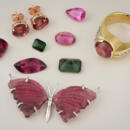
Gem in the Spotlight: Tourmaline
… hundreds of years. But, before the advent of modern gemology, most tourmaline was believed to be ruby, sapphire, or emerald. Gemology of Tourmaline Gemologically speaking, tourmaline is its own mineral and not a species or member of a …was first discovered in 1554 in Brazil when Francisco Spinoza’s expedition confused its vibrant green with that of emerald. Thus began a long trend of confusing tourmaline with other gems. Another notable example of this is the “Caesars Ruby…
-
The Birthstones
… term: brilliance, hardness, rarity, antiquity, purity and permanence. Learn more about Diamond May’s Birthstone: Emerald A symbol of love and rebirth, the emerald has been treasured for over 4,000 years. The name for the emerald is derived … “smaragdos”, meaning green stone. Spring and green symbolized faith and fertility. The early Christians valued the emerald as a symbol of resurrection. Emerald was believed to have special powers to improve a person’s psychic abilities and …
-
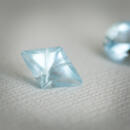
Gem in the Spotlight: Aquamarine
…passed down for generations but this tiara she special ordered from Garrard in 1957. The Gemology of Aquamarine Like emerald, aquamarine is a member of the beryl family (along with morganite, heliodor, and others). Unlike emerald, it is … was believed to guarantee a happy marriage Best known for its beautiful blue color, aquamarine was used to bring happiness, eternal youth, and control passion. In the body, aquamarine was thought to reduce swelling, prevent convulsions, …
-
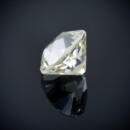
The History of Diamond Cuts
… experience to get the job done right. The point cut diamond is likely where the tradition of the diamond engagement ring began. Mary of Burgundy became the first to receive a diamond engagement ring. Archduke Maximilian of Austria gave … the show straight up. Instead, they show it in a dome effect. The Modern Round Brilliant Cut Now, we are nearing the end of our journey through the history of diamond cuts. The modern round brilliant cut is a product of math and science…